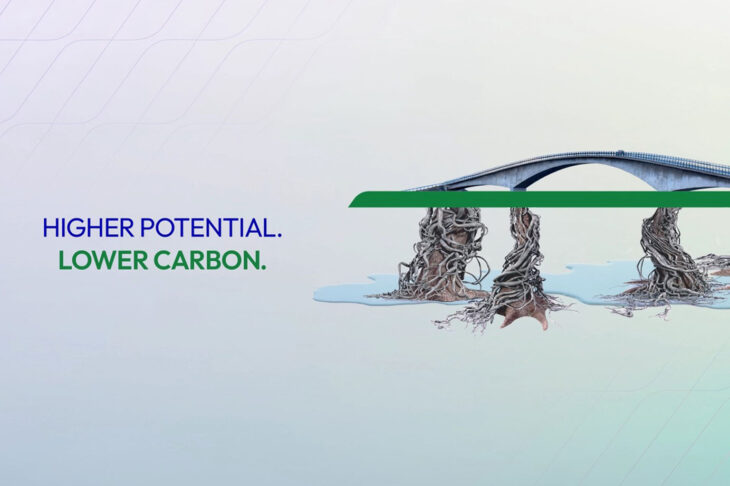- Strategy
- Sustainability
Why B2B brands struggle to package, position, and communicate their sustainability strategies.
In a world where sustainability is at the forefront of decision-making, brands face immense pressure to integrate their sustainability efforts. However, despite genuine intentions and robust strategies, many companies falter in packaging, positioning, and communicating their sustainability initiatives. In our latest blog, Brand and Strategy Director, Simon Hall looks at how these challenges arise from a combination of complexities within the sustainability environment.
Complex challenges.
The packaging of a sustainability strategy is a lot more than just creating and publishing an annual sustainability report. It is about communicating an authentic message that can be understood by employees, stakeholders and customers alike.
Sustainability initiatives can cover everything from becoming net zero to reducing the amount of carbon to water conservation and being ethically responsible. However, each goal can be made up of complex data and technical terminology that people might find confusing. On the flip side, if the sustainability strategy comes across as too simple, then businesses can be accused of ‘greenwashing’.
For EGO, a global leader in battery-powered garden equipment the challenge was to educate and convey the message that advancements in battery technology was helping to drive the shift away from combustion powered tools, which would enable a cleaner, quieter and more efficient alternative. The aim was for EGO to showcase the tangible environmental benefits of its electric solutions while avoiding pitfalls like greenwashing, solidifying its position as a champion of sustainable innovation in the sector.

Many brands will try and communicate every detail of their sustainability strategy, but this can lead to confused messaging which audiences won’t understand. Sustainability requires a deep understanding of what matters most to the target audience and it’s important to be as transparent as possible.
Scepticism and trust.
Corporate sustainability claims are often met with scepticism, with greenwashing scandals raising these concerns. So much so that advertising watchdogs in the UK and EU are cracking down on false sustainability claims. This means that businesses face a tough challenge to package their sustainability message in a way that feels genuine without falling into the trap of making unverified claims. It’s for this reason that some businesses find it difficult to even approach the subject as they are uncomfortable on how to tell the story.
CEMEX exemplifies how effective communication can overcome scepticism and build trust in the sustainability space. CEMEX, a global leader in building materials, faced the challenge of positioning its lower-carbon cement as a credible and innovative solution. Wyatt helped CEMEX navigate this landscape by crafting a narrative that seamlessly integrated the company’s sustainability efforts into its brand identity, ensuring authenticity and transparency.

But positioning a sustainability strategy is about embedding it into a brand’s identity, connecting it to the values of the business and finding new and unique ways to stand out in the market. With so many companies using phrases like “eco-friendly” or “carbon-neutral,” there is the risk that businesses can become lost in a world of generic sustainability claims. Additionally, for some brands sustainability can feel like a bolt on rather than being an integral part of their ethos. The communication of this messaging can feel forced.
Knowledge is key to consistency.
One of the key parts of communicating an effective sustainability strategy is to educate and get the buy-in of the employees and internal teams. When teams are well informed, they are able to confidently answer questions and communicate the value of sustainability initiatives to their customers – this goes a long way to building trust and loyalty. Customers are expecting businesses to take the topic of sustainability seriously, with sales teams for example, being the main point of contact, it makes them instrumental in aligning the company’s commitment and values to their sustainability goals.
Additionally, having a clear vision and setting ambitious goals demonstrates that sustainability is central to a business’s long-term strategy. It can be as simple as developing a road map with a clear set of goals and objectives, and by articulating the bigger picture it helps to tie this vision into the brand’s identity. Leveraging story telling will help to bring the vision to life, which can involve using real world examples and personal stories.
A good example is Patagonia, who’s storytelling often involves their environmental activism, and the people impacted by it. They are able to create emotional connections with their audience and turn sustainability goals into compelling narrative that inspires change and makes people sit up and take notice.
Authenticity matters, particularly when aligning a sustainability message with the core values of the business. Customers can pick up quite quickly when they feel authenticity is not there. Actions speak louder than words, and often these actions need to be demonstrated. The sustainability message shouldn’t be disconnected from the brand ethos.
Building trust and leading change.
Sustainability communication often focuses on facts, figures, and achievements. While these are important, they may fail to engage consumers on an emotional level. Stories of people positively impacted by a brand’s initiatives or visuals showcasing the tangible results of environmental efforts can create a stronger emotional connection and foster brand loyalty.
The path to effectively packaging, positioning, and communicating sustainability strategies is fraught with challenges. Complexity, scepticism, and market saturation requires brands to carefully balance clarity, differentiation, and authenticity.
At Wyatt International we partnered with Quaker Houghton to effectively communicate their “See Beyond” sustainability strategy, ensuring it resonated with a diverse audience of stakeholders. We crafted a clear and compelling narrative that positioned “See Beyond” as a forward-thinking ESG initiative deeply embedded in Quaker Houghton’s corporate ethos and emotional narrative.

The project extended beyond strategy to execution, where we developed visual assets and packaging that embodied their sustainable ethos, ensuring that the messaging was both authentic and actionable. This work not only amplified Quaker Houghton’s commitment to sustainability but also demonstrated how ESG can be leveraged to foster long-term growth and industry leadership.
While these hurdles are significant, brands that master these aspects can not only bolster consumer trust but also lead the way in driving meaningful environmental and social change. Sustainability is no longer optional, and the brands that communicate it effectively will shape the future of conscious commerce.
